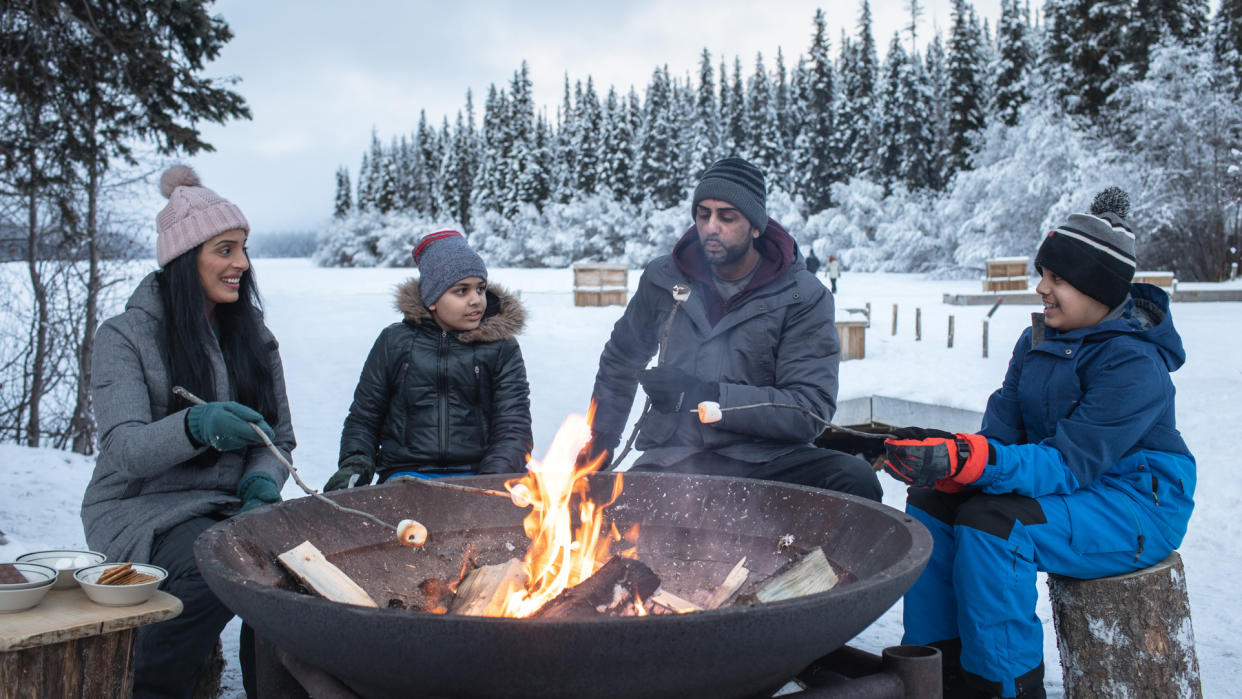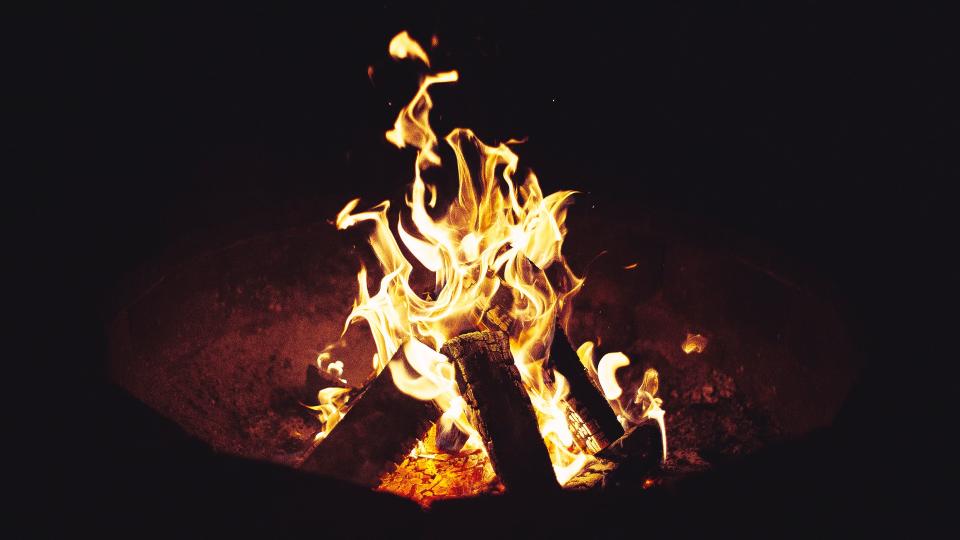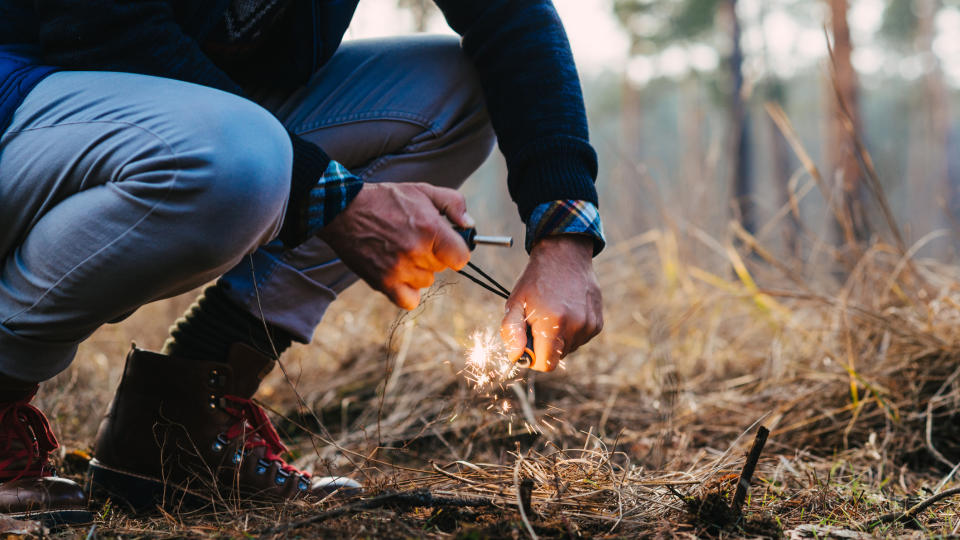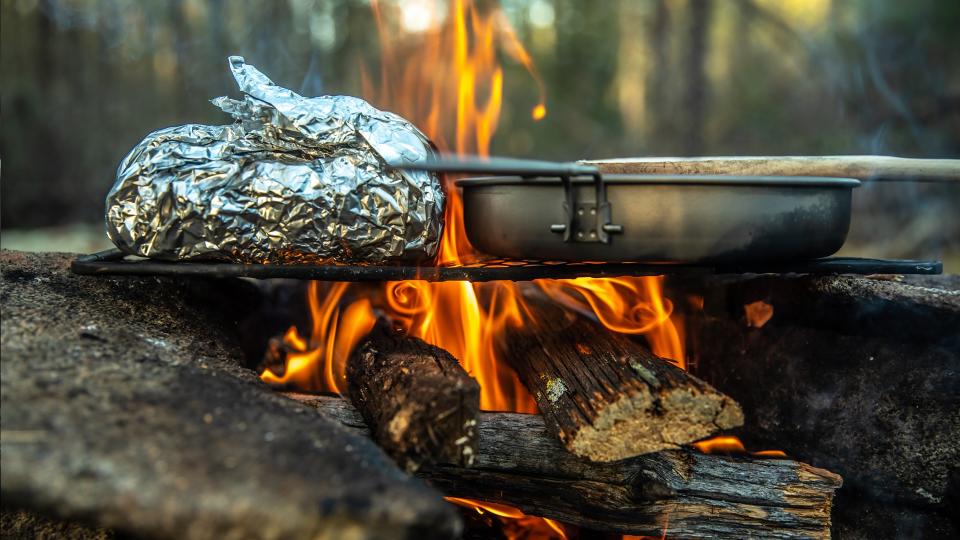How to build a campfire in winter: our survival guide for freezing season camping

The idea of gathering around a winter campfire, breath misting through mittened hands, passing around hot Gluhwein and telling ghost stories is a romantic one. If you're lucky enough to have the knowledge of how to build a campfire in winter, this is an experience you can give to your family or camping buddies.
Campfires are a lot like hot tubs: most tend to only use them in the summer but they’re actually far more useful in winter. Knowing how to build a campfire in winter is not only great for that little extra warmth, it can be a life-saving skill too.
However, due to the cold temperatures and lack of dry timber available, combined with a short supply of patience means that we don't tend to see as many winter campfires as we do summer ones. If you’re already cold, you’re less likely to take your time over the fire-building ritual the way you do during the warmer months, not to mention the fact that you’re likely to have your movement restricted by extra layers of winter clothing, all of which makes the task more arduous. But if you’re cold and wet, you can’t just rely on having the best sleeping bag – you’ll want to get that fire going as quickly as possible to stay safe out there.
Once you know how to build a campfire in winter, you can enjoy year-round adventures in the wild gathered round the fire with friends, drying out any wet clothes and enjoying welcome warmth and good hot food.
Meet the expert
Today's best deals
1. Winterize your fire pit

A fire pit needs a snow-free spot that's sheltered from the wind
If you can't find one, you can dig one out
Needless to say, you’ll want to find a dry, snow-free spot that’s sheltered from the wind in which to build your fire pit. If there isn’t one, grab your shovel and get digging. Frozen ground won’t do as once the fire melts the snow, the water will extinguish your fire. One solution is to place stones on the ground and build your fire on top of them.
2. Hunt for dry tinder
Bringing your own dry tinder is perhaps the best option
Wet kindling is no good for a fire
You can sometimes find dry kindling under powdery snow
Don't go cutting branches off nearby trees
Okay, you don’t necessarily have to hunt. You could just bring some dry firewood with you if you’re car camping. If you’re sourcing it in the wild, finding dry firewood can be the trickiest part of building a campfire in winter. Wet kindling will do you no good but you can work with fallen branches covered in dry, powdery snow, which contains little moisture. Dust them off and they should be usable. You may need to go a bit deeper and higher into the brush to find tinder that’s not been touched by rain and snow.
You should go around lopping off branches in the surrounding area with your camping axe. Firstly, it doesn't align with the leave no trace principles and, secondly, fresh wood contains far too much moisture to burn effectively. Better to bring your own responsibly sourced firewood that's been seasoned properly, as it's not only better for the environment, but you'll also have a much more successful campfire.
3. Add some spark

Firelighters, newspaper, pine needles and pine cones all work to get that fire started
You’ll probably need the help on an accelerant when it’s time to get your fire going. The easiest solution is to bring some fire starter with you, but if you don’t have any or are seeking a more natural approach, you can use newspaper, pine needles, pine cones and tree bark to help get things going.
4. Stoke your fire
You'll need to attend to your fire to keep it going during winter
Your fire will need a little extra TLC in winter weather so don’t think you can just light it and then kick back and enjoy a hot winter drink. Gather round the fire and keep stoking it and adding fuel regularly to help it stay alive. It doesn't mean you can't join in with the songs and ghost stories, but you'll need one eye on your fire.
5. Dry out more firewood

If all you have is damp logs for the next day, place them near the fire to try to dry them out
Ideally, you should have a stash of seasoned firewood to avoid this scenario
If you’re staying a few nights and want to have another campfire, a great tip is to surround your fire with damp logs to dry them out so you have a good stash all ready to go for tomorrow.
It's obviously worth noting that proper firewood takes months to season and needs to be stored properly too. Again, this is why it's worth bringing responsibly sourced wood to the party, rather than relying on what meagre fuel you can find in the surrounding area.

